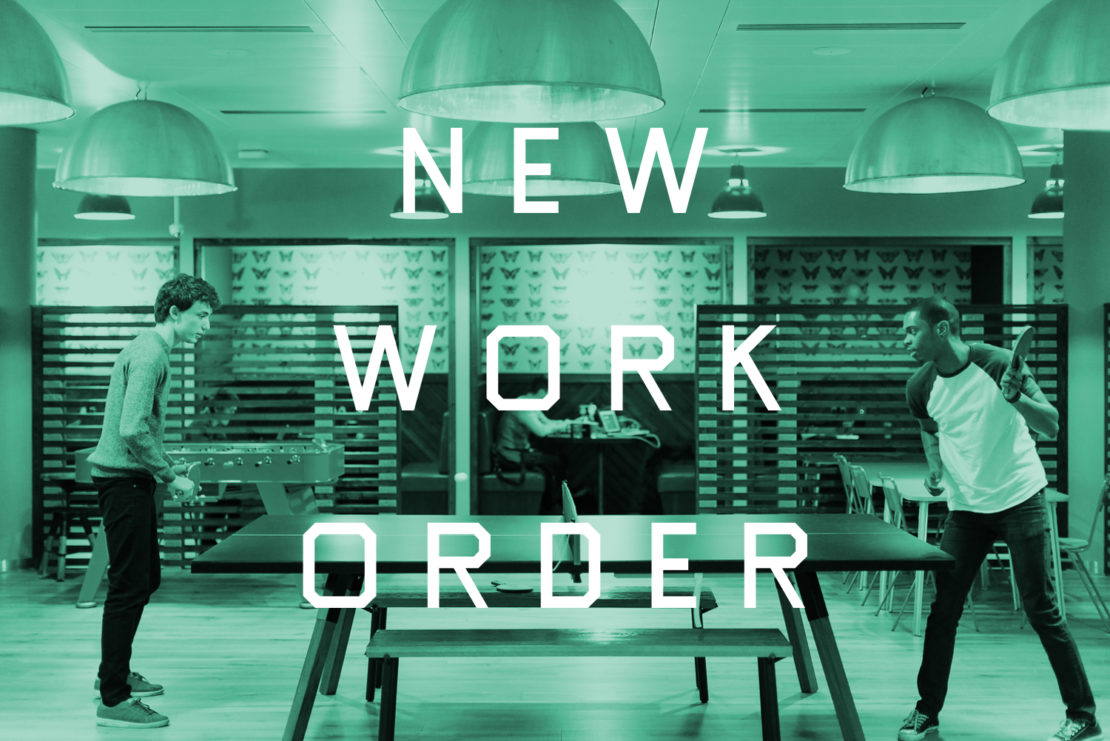
New work order
In March 2015, it was time for Hayden Wood and Amit Gudka to move out of the kitchen. The pair had raised investment for their startup, Bulb, a renewable energy supplier, and they were looking for an office.
A coworking space was the obvious choice: somewhere that would allow them to take on more desks as needed. (When I meet them a little over a year later, they were eight strong and hiring around one more each month.) "We looked at a few different spaces," says Wood, who had previously spent 10 years in management consultancy for Monitor Group (now Monitor Deloitte) and Bain & Company. "Second Home had been open a few months and we took the tour. We were nervous: were we going to get in?"
It is odd, perhaps, to think of the renting of office space as a socially testing business, entailing pre-interview nerves. But acceptance into Second Home, for some, signifies hipness. Juliette Morgan, partner at Cushman & Wakefield, a property consultancy, who works out of Second Home, says: "I used to joke that there was a cool alarm that went off when people came to look round – but then they let us in."
Morgan's case may have been helped by her previous role as head of property for Tech City, the government initiative promoted by David Cameron's advisor Rohan Silva, who also happens to be the co-founder of Second Home. Wood admits that he and Gudka, who previously traded energy at Barclays for eight years, did know some people at Second Home already. "When we looked on the website, some of the faces were familiar. And we hoped our business idea was quite good."
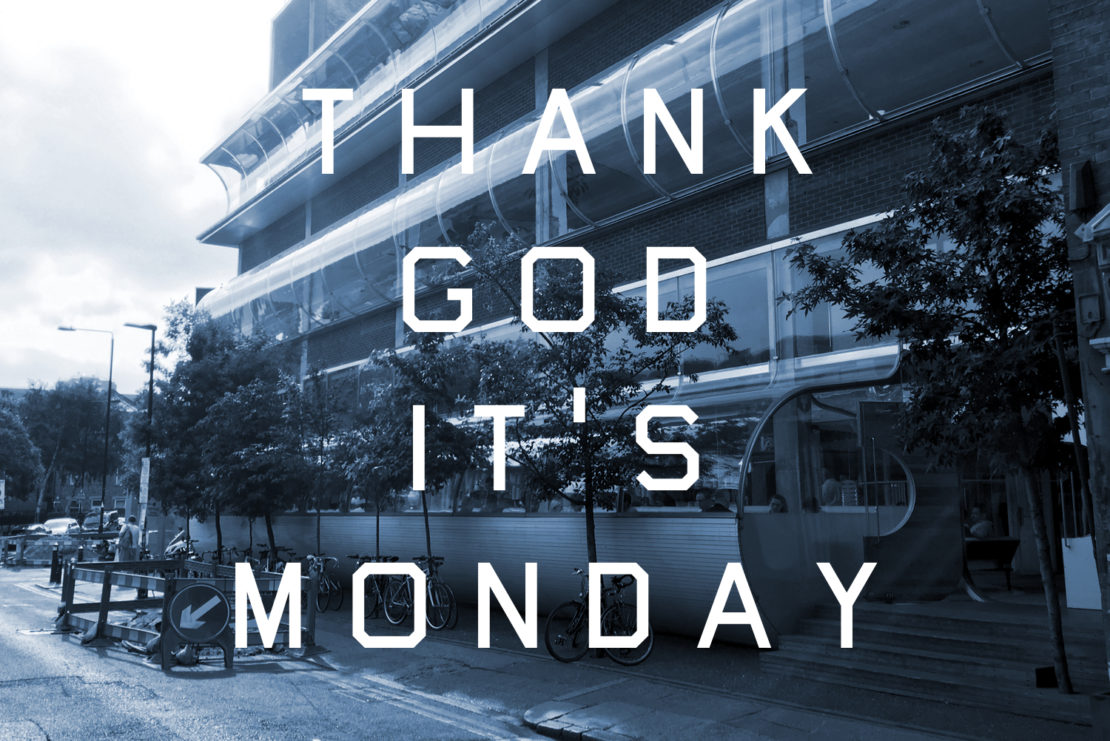
When I arrive at the Second Home reception desk, a sign urges me to "join us tonight at 3.30pm for meditation." Before that, there's the option to have lunch at the atrium restaurant, Jago, founded by a former head chef of Ottolenghi and the former general manager of Morito. Today, there are cauliflower fritters made with lentil flour (gluten-free), which you can eat while admiring the exuberant architecture of Spanish firm SelgasCano, which has transformed the former carpet warehouse near Brick Lane: a plexiglass bubble punched out of the front of the building, sweeping curved walls, a wide cantilevered staircase up to the pod-like offices on the first floor.
The benches are orange, the floors yellow. ("There is quite a lot of science behind the colours, to do with improving mood and productivity," says Morgan.) Flowers flop in elegant vases and masses of plants sit in pots on sills, desks and walls. A row of fruit trees is in blossom outside. The exposed concrete pillars look unfinished, with scribble and tags still visible. Sam Aldenton, Silva's co-founder, has sourced 600 mid-century modern chairs from all over Europe.
Sign up to our newsletter
"It's an aesthetic that tells an investor you're being frugal with their money," says Morgan, "but it's also playful and energetic and that works for your brand. For us, it tells the tech companies we want to work with that we understand them. Coworking spaces say something about you, that you're a Second Home business or a Central Working business."
Being a Second Home business gives you access to others that have also made the grade. "We had a strong business plan, but there were other things we didn't have,"says Wood. "Someone at Second Home recommended our branding agency, Ragged Edge. Congregation Partners, who are here, have helped with recruiting; and we met Blue State Digital [a digital strategy agency that worked on Obama's election campaign, whose London office is based at Second Home] in the bar one Friday night and they offered us a workshop about how to market and launch. It's an extremely generous collaborative culture."
Other kinds of business at Second Home include venture capitalists; the European headquarters of chore-outsourcing company TaskRabbit; and ASAP54, an app that scans online fashion and locates where to buy it. Silva and Aldenton curate events that help them to network and that offer a kind of intellectual support and ballast – so Amit Gudka, a fan of the South African theoretical physicist Neil Turok was able to hear him speak at Second Home and afterwards have dinner with him and Silva.
The unstoppable rise of coworking isn't about corporate downsizing, the growth of the startup or the gig economy. What distinguishes contemporary coworking spaces is their cultural claims
Wood and Gudka's first post-kitchen office was in Second Home's roaming area, where freelancers come and go. A desk costs £350 a month; they are sold several times over (a four-to-one ratio is thought to ensure the right level of occupancy without straining supply). The pair subsequently moved into a studio, then a larger office; they will take a bigger space upstairs when the refurbishment of three upper floors is completed. "It doesn't feel like being a tenant," says Wood. "The community team here has taught us a lot about how to interact with our own members."
We are all members now, it seems. Business ventures are turning themselves into clubs, making what used to be banal choices about office space or energy supply statements of identity. There was no shortage of office options for Wood and Gudka, and all of them carried connotations about what kind of business they meant to be: incubators and accelerators run by different sorts of organisations; hacker spaces; industry- and sector-coworking spaces; more traditional office rentals from companies like Regus and Workspace; and all manner of coworking spaces, from scruffy coops to coworking empires.
Coworking began because startups and freelancers, typically in tech and the creative industries, needed somewhere to work. But as more organisations outsource more of their operations – or as large corporates seek to reach those startups – the range of activities represented among coworkers has expanded to comprehend almost everything. KPMG’s tech startup advice arm is based at Interchange in Camden. Merck, Microsoft, American Express and GE all lease desks at WeWork, in addition to running their own offices.
The annual Global Coworking Survey, produced by Deskmag, anticipates that 10,000 new coworking spaces will open worldwide in 2016. In Europe, the estimated number of spaces (though it's hard to keep track) has risen from 3,400 in 2013 to around 7,800 in 2016. According to Cushman & Wakefield's Juliette Morgan, "Twelve per cent of the uptake in the London market in the last year has been spaces like this. Everyone thinks it's going to continue."
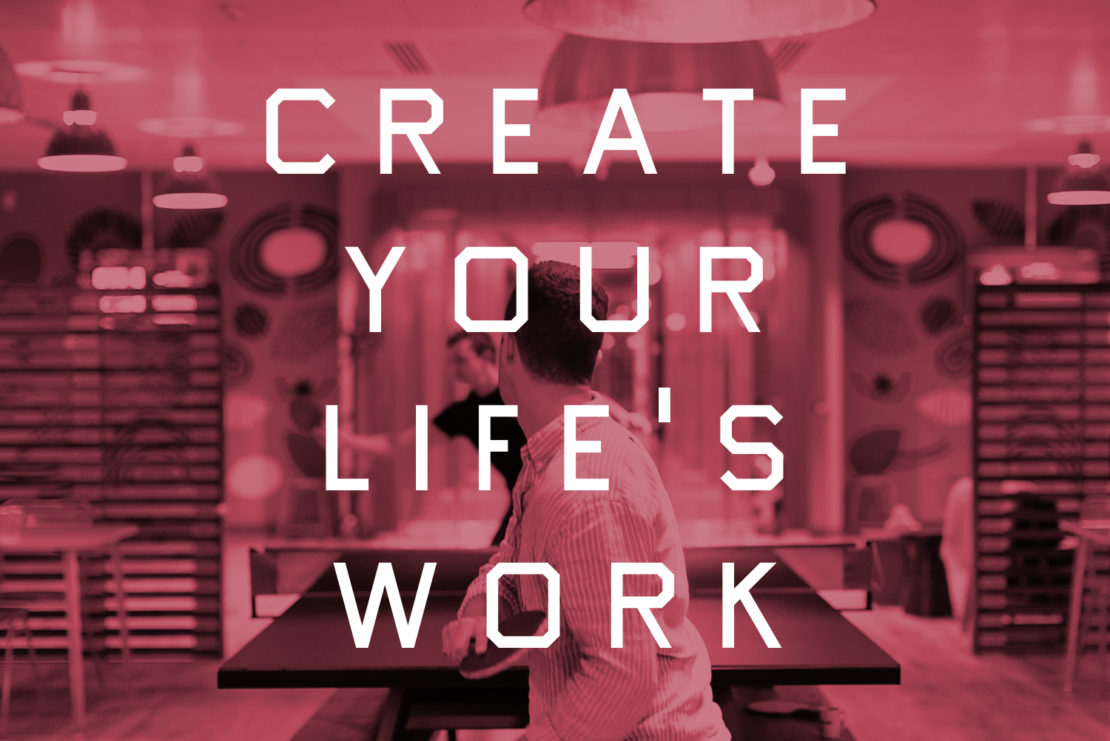
At a purely economic level, it's easy to see why. As large corporates downsize their core operations, they no longer need vast offices. Iris Lapinski watched the process in action when her educational non-profit startup, Apps for Good, squatted in Royal Bank of Scotland’s offices in the City in late 2008. "RBS was going through huge waves of redundancies. On our floor, it was three of us and 150 empty desks," she says, "and then new people would come in and they'd get fired too. Eventually they'd fired so many people they closed down the building." Aware that "tech companies were doing something funkier", she moved Apps for Good into the Trampery, the first coworking space in Shoreditch.
Adam Neumann and Miguel McKelvey founded WeWork in 2010 in New York to capitalise on this corporate downsizing phenomenon: leasing large spaces, often previous corporate offices, subdividing them, then selling them at a profit. WeWork typically rents its buildings (although it owns its latest London site in Paddington) then subleases the space – with, according to Fast Company, average gross margins of 60 per cent.
The model has proved so successful that WeWork now has 103 locations in 29 cities worldwide. The company will open five new coworking spaces in London this year, bringing the total to 11, with Paddington large enough for 2,100 'members'. The company recently authorised the sale of up to $780m in new stock, giving it a $16bn valuation and making it, on paper, the sixth most valuable private startup in the world.
The Freelancers' Union in the US claims that 30 per cent of the US working population is now freelance, and predicts a rise to 50 per cent by 2035. One in eight London workers are self-employed. But the unstoppable rise and rise of coworking isn't simply about corporate downsizing and the growth of the startup and the gig economy, significant though these are.
If coworking is all about finding a space to express your individualism, follow your passions, explore your creativity, why do the spaces all look so alike?
What distinguishes contemporary coworking spaces is the nature of their cultural claims. A study by Harvard Business Review found that coworkers believe their work has more meaning. The authors suggested that working alongside people doing different things reinforces workers' identity and distinctiveness; that coworkers feel they have more control over their lives (many spaces are open 24/7); that they have a stronger sense of community; and that there is still a social mission inherent in the idea of coworking, as outlined in the Coworking manifesto, and reinforced by the annual Global Coworking UnConference or GCUC (pronounced 'juicy'). WeWork's website urges you to "Create your life's work".
"Do what you love" is one of WeWork's slogans, emblazoned on the front of a notebook they give me when I visit. Another is "Thank God it's Monday". Neumann describes his generation (he is 36) as the 'we generation' which, he explains, "cares about the world, actually wants to do cool things, and loves working."
The coworking space – even on a vast, industrial scale as at WeWork – is a club. And the whole point of clubs is that you want to belong to them. To someone raised in the era of the corporate office, used to the subversive feeling of being behind enemy lines, this may seem an odd way to think about the workplace. To anyone for whom The Office of Ricky Gervais and Stephen Merchant was painfully recognisable, with its grey partitions and random people thrown together to do pretty pointless things and get on each other's nerves, it might seem risible.
But clearly lots of people want this. A paradoxical effect of the internet has been to make us desire more social connection in the real world. From coffee shops to festivals to gyms, examples are everywhere of people keen to come together and share experiences.
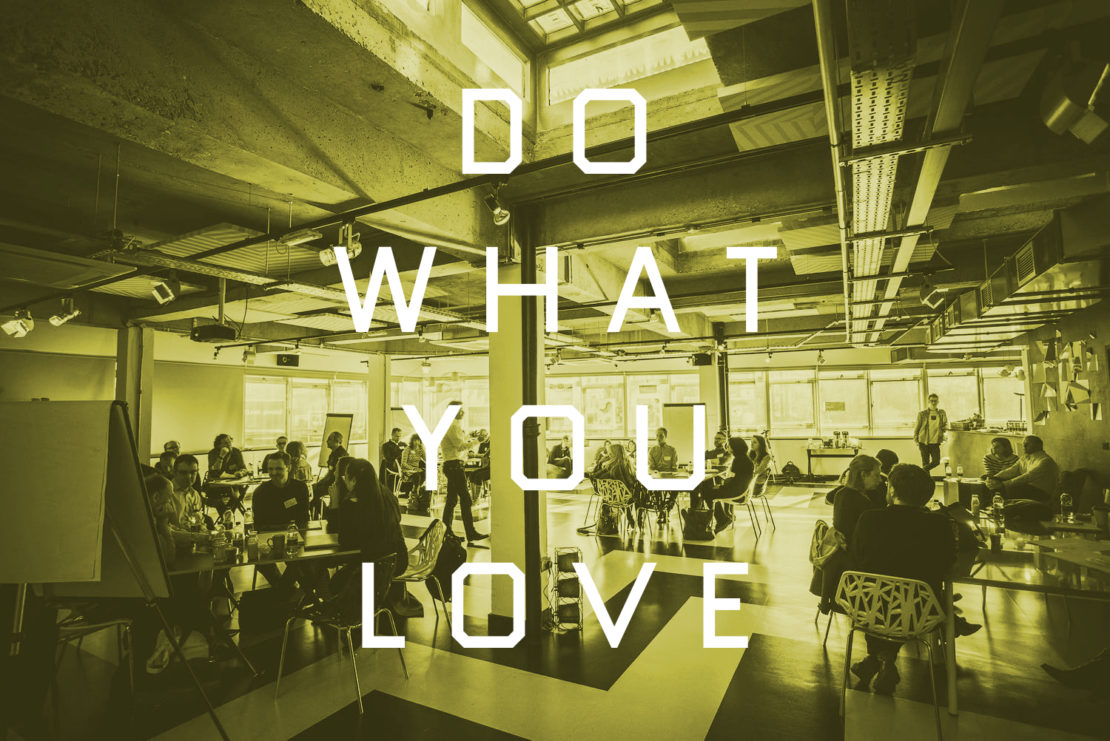
Most read on the site this month
Fiction: Divided we stand, by Tim Maughan How Scotland is tackling the democratic deficit The Long + Short has ceased publishingAs we have to rely more on ourselves and on our own resources at work, it's probably not surprising that we seek out the reassuring sight of other people doing the same. As Michael Hardt and Antonio Negri say in their 2012 book, Declaration, "The centre of gravity of capitalist production no longer resides in the factory but has drifted outside its walls. Society has become a factory."
Work has blurred into life, in part owing to the peculiar nature of our current relationship to technology. We do not conceive of machines, as we did in the past, as engines of oppression, exploiting workers; rather, we frame our devices as intimate and personal, interactive and fun, blurring the distinctions between work and play.
We tend not, for example, to view posting on Facebook as labour, even though there are perfectly good economic arguments why we should. The eight hours' work, eight hours' leisure, eight hours' rest fought for so fiercely in the 19th century has become meaningless in an era when we willingly, eagerly, spend 12 hours a day on a laptop.
As work becomes increasingly unpredictable and permeable, in a way that reflects the internet itself, workspaces are imagined more as social landscapes. Increasingly, they are designed for serendipitous encounters, emotional expression, explorations of identity. Of course, you could take the cynical view that the imperative of productivity has now colonised every aspect of our lives, that our private relationships have become 'social capital', that even our intimate interactions have been turned into a kind of labour. Or you could say, as coworking enthusiasts tend to, that work has got a whole lot more fun.
Whatever, this shift in our sense of work helps to explain why workplaces have increasingly come to resemble clubs, and why no one is falling about laughing at the idea of Silva and Aldenton calling their workspace Second Home. The workspace has become an expression of identity – which raises two questions: first, if coworking is all about finding a space to express your individualism, follow your passions, explore your creativity, why do the spaces all look so alike? And second, if the workplace is all about belonging to a club and clubs are by their nature exclusive, how scalable is that?
Business ventures are turning themselves into clubs, making what used to be banal choices about office space or energy supply statements of identity
There are new buildings rising all around WeWork Moorgate, in the City of London; an insistent noise of drilling, a clang of girders, a rumble of concrete mixers. This is some of the most expensive real estate in the world. Crossrail's engineers are tunnelling beneath; giant new buildings advertise themselves on construction hoardings everywhere at street level: there is a provisional air, as though the city can't quite catch up with its own wealth.
WeWork Moorgate is the second largest coworking space in the UK after WeWork Paddington, accommodating 3,000 people over eight floors. A permanent desk will cost you £425 a month, rising to £675 depending on its location in the building. A one-person office will set you back £725 to £825 a month, a four-person £2,600 to £3,100. The largest office here is for 40 people; in Paddington, one company has 230 desks.
The interior ticks all the coworking style boxes: raw concrete; exposed ceilings revealing air conditioning ducts, pipes and silvered insulation; multicoloured upholstery; a kitchen with its own island bar offering free tea, coffee and craft beer; easy chairs and sofas; tables of varying heights and sizes; music; and some signifiers of fun, such as a table tennis table (but, unlike at WeWork's South Bank site, no arcade machines; nor, unlike at its Devonshire Square, any skateboards on the walls).
In the toilet, cups for mouthwash urge you to 'stay fresh', which I am sure is meant jocularly but which arouses in me the same sort of mulish resentment I used to feel when I worked in advertising in my twenties and slogans in reception ordered me to "reach for the stars". (What makes you think I wouldn't, mate?).
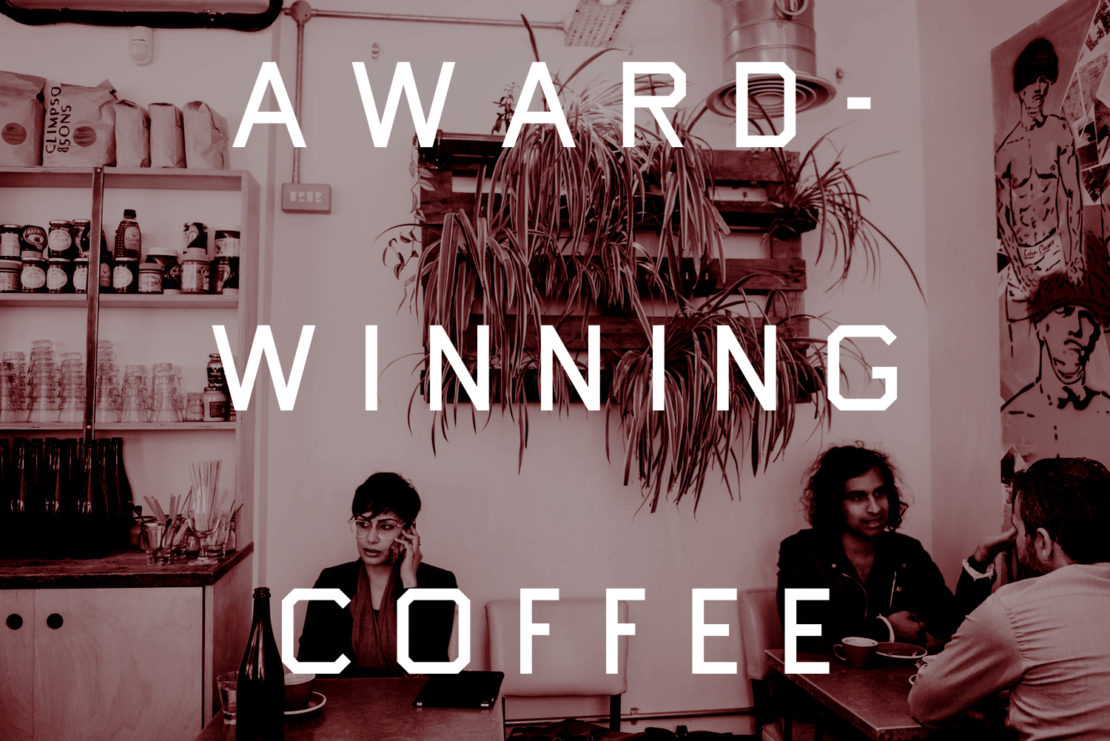
Given that coworking, which after all grew out of hacker culture, is supposed to embody an attitude of resistance to conventional authority, WeWork is curiously corporate, certainly in its approach to communication. I am asked not to quote the community manager who shows me around. There isn't anyone who can speak on the record (or off it, for that matter) in the building. My queries have to be submitted in writing then edited down because there are too many of them. The answers come back, finally, appended: "All attributable to Eugen Miropolski, Managing Director, Europe".
Eugen Miropolski, Managing Director, Europe, says that WeWork is "much more than an office space provider. Members are given the space, community and services they need to create their life's work". Going around the building, what you mainly notice is that the spaces allotted to people's life's work are rather tiny and cramped. Effectively off corridors, they seem rather conventional behind their glass partitions: a desk, a chair, a lamp, a drawer. Many coworkers sit with their backs to their colleagues, staring at blank walls, with barely enough space for a third person to pass between them. You need a keycard to get anywhere inside the building.
WeWork's enthusiasts, though, emphasise the connections they make with others, either physically or through an app that links members to 50,000 others worldwide. Miropolski claims "more than 70 per cent of our members collaborate with each other".
This empire of office space has been derided as 'McCoworking'; but another way of looking at it might simply be that it's a sign of natural segmentation as the market matures. Many workspace providers set up because they wanted some office space themselves; they have no desire to be other than local, small-scale and collaborative. But others are starting to take on a role as akind of corporate parent. Canada's Coworking Ontario provides health insurance. WeWork is also reported to be looking at providing discounts on healthcare, payroll and shipping, replicating services that a corporate employer might once have provided.
Explore
Digital nomads and the future of work Co-living: Better together? Visiting a 'creative hub' on a remote Scottish islandMeanwhile, at the other end of the scale, coffee shop-workspace hybrid Timberyard is dematerialising the desk, providing mobile workers who need to sit down and check their emails with the most ad hoc of workspaces. Most of Timberyard's users don't pay for space, the usual coworking business model, but they do pay for the tea and coffee ("award-winning", co-founder Darren Elliott is keen to point out) and for the artisan-produced, wellness-focused food (super seeds with almond butter on toast, beetroot, avocado and hummus on toast, hibiscus cake). Unlike most coffee shops, Timberyard's branches in Seven Dials and Soho are designed to encourage customers to stay and work: there is fast Wi-Fi with plentiful power sockets, careful regulation of temperature, lots of natural light and attentive design. Many of the chairs have been rescued from skips and reupholstered; the tables are striped like Jim Lambie staircases; the disabled toilet looks like a shipping container.
In the last couple of months, Timberyard has renting out permanent desks in the basement of its Soho branch and now hosts three companies, one of eight people, one of 12 and one of 20. But Elliott says the shop upstairs will always be open to the street and the public. Typically, workers stay for a couple of hours, but they might be there for 20 minutes or all day. "We believe this is the way people will work in the future," Elliott says, surveying a sea of laptops: "portable, connected, independent and collaborative, sharing resources and seeking out inspiring spaces." Timberyard intends to become a way station for the digital nomad.
The logical extension of the elision of work and home life is that the same organisations might end up providing both. WeWork is experimenting with micro apartments in two locations: in New York and at Crystal City, outside Washington DC. Second Home is also believed to have co-living plans. Roam, which began in Bali, intends to build a global co-living network, with its offer: "Sign one lease. Live around the world." From its initial base in Ubud, it has expanded into Miami and recently Madrid; Buenos Aires and London are 'coming soon'. Roam isn't simply about a bed for the night: it sells itself partly on the quality of its coworking offer. In Bali, the office space is on the roof, under a palm thatch, with a swimming pool in the courtyard below.
Coworking organisations increasingly see a market in digital nomads: if you can work from a coffee shop in Seven Dials, why not a rooftop in Bali? It's not even necessary to have a string of spaces across the world to attract drop-ins from elsewhere: Coworking Visa and CoPass offer 'passports' that guarantee a certain amount of time in any of their participating spaces.
The Trampery, the pioneering coworking organisation in London that attracted Iris Lapinski, is now moving into co-living. Founded by the sociologist-entrepreneur-musician-traveller-dandy Charles Armstrong, The Trampery currently has three spaces, at Old Street, near City Hall, and in Hackney Wick. Armstrong began with a cross-sector workspace but now specialises in fashion and retail at Old St, travel and tourism at London Bridge, and digital artists, fashion and design in Hackney, finding this a better way to create 'intentional communities' and secure corporate partnerships.
In what Armstrong calls "a somewhat unconventional deal with Peabody", the Trampery is about to start building Fish Island Village in Hackney Wick: a co-living space that will also include traditional social housing. This experiment is partly a response to the pricing out of London of artists and other creatives and partly an attempt "to move beyond a single workspace to think about a neighbourhood".
When Fish Island Village is built, the Trampery will curate its inhabitants based on what Armstrong describes as a mix of "means testing and merit testing". Rather than the usual micro-apartment model, "cellular units with a cavernous social area", Fish Island Village will have communal spaces for up to six bedrooms, "more like a large family. There will still be a members' club, shared by everyone." The development won't be aimed solely at affluent 18- to 30-year-olds, but will include flats of up to four bedrooms, suitable for people with children. "We don't want to create a single-generational demographic bubble."
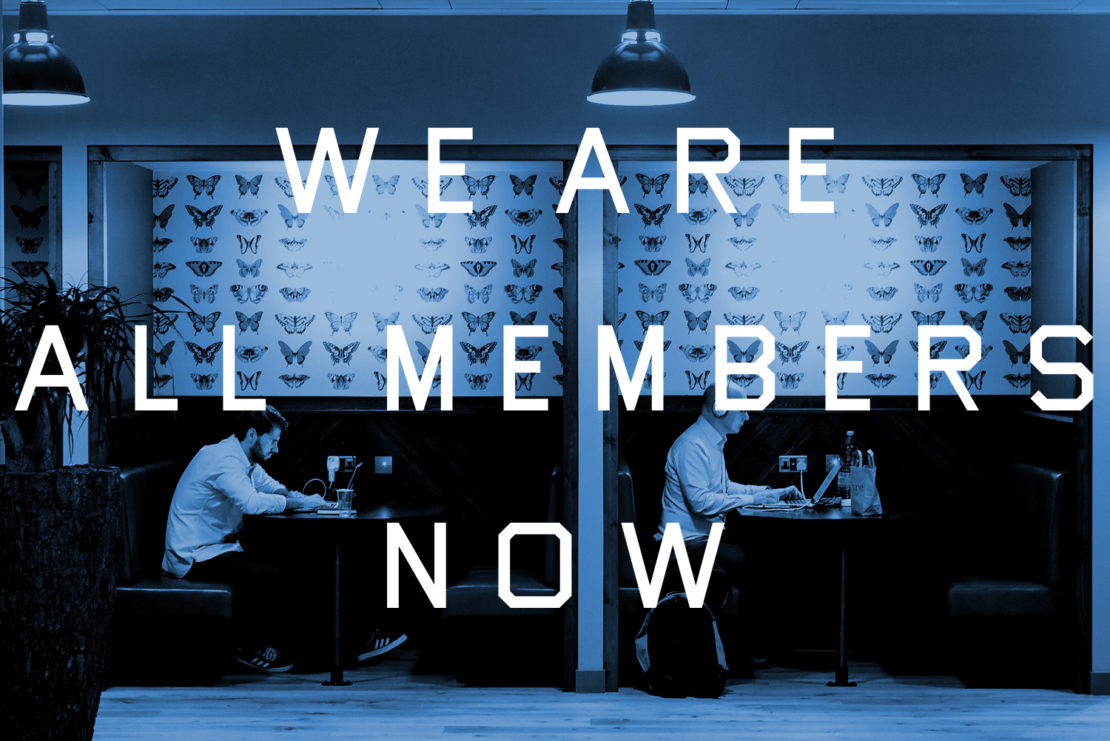
The single generation demographic bubble is of course the trouble with all this curation. Even while lip service is paid to ideas of innovation coming from unexpected places, from unlikely collisions and random connections, it is a very tough-minded curator who doesn't seek to be surrounded by people who are basically a bit like himself. With coworking spaces, as with the internet, there is the promise of connection and collaboration and a world of newness and surprise. And, as with the internet, there is a danger that you can easily end up talking either to people just like yourself.
So what of those questions about style and scalability? As far as the former is concerned, coworking spaces do all look a little bit alike – but design has a long history of innovators and followers. Inevitably, everyone borrows the more directional visual cues, even to the point of pastiche.
But they are not, in fact, all alike. They are surprising in their degree of difference. There are industrial-scale operators that lack the warmth and personal touches of the smaller providers (no one at WeWork is ever going to come out of the kitchen as you arrive, knowing your name and whom you're here to visit, which is what happens at the Trampery); but which also lack their preciousness about who is allowed to the party. And then there are the cool clubs that everyone in their right mind would want to join, but where few are chosen.
It seems likely that coworking spaces will follow a pattern set by festivals. They will proliferate, each developing its own distinctive vibe, projecting an array of differing identities while all answering a need for the increasingly autonomous workers of the future to hang out with other people.
Meanwhile, the current excitement over coworking may have less to do with a method of office organisation than with a handful of hugely successful connectors. When Iris Lapinski moved out of RBS, she chose the Trampery partly because "Charles draws in interesting people. He's got links to corporates, government, policymakers." One of these connections turned out to be Bob Schukai, head of advanced product innovation at Thomson Reuters, which led directly to £300,000 of sponsorship revenue for Apps for Good. "Charles is a great connector," Lapinsky says, "and that is really what makes the Trampery so special. Most don't have the same flair."